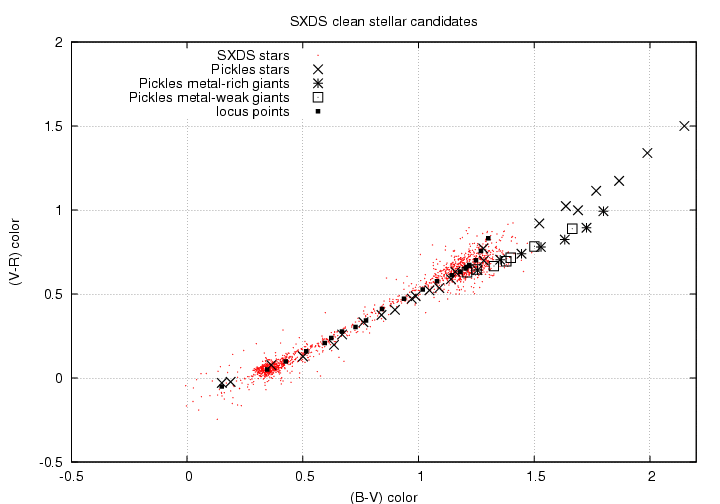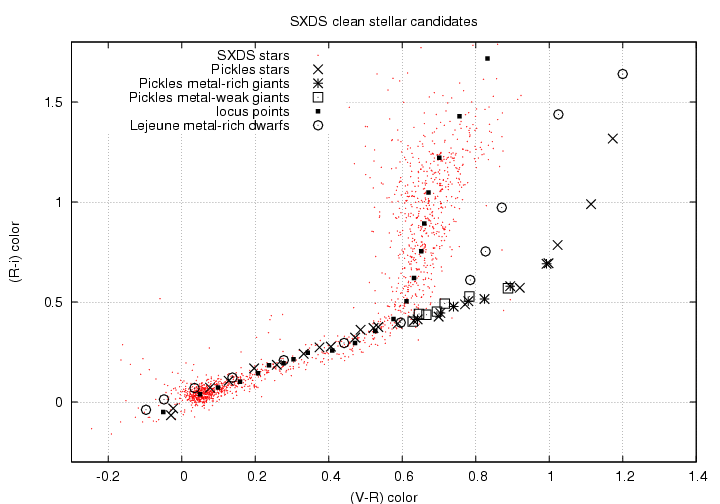
For earlier reports in this series, see
My goal is to perform in the SXDS field the same analysis I did for the SDF:
I have finished my first version of analysis on the SXDS, using the version 1.0 catalogs (kindly provided by Tomoki Morokuma on Jan 8, 2006) based on the i'-band detections. The first step was to create a stellar locus. I picked colors (B-V), (V-R) and (R-i'). I chose a sample of objects which, based both on their morphology and on their colors, were very likely to be stars. I then applied the techniques described by
Below are graphs showing the locations of stars in the clean sample, the locus nodes derived from the stars, and positions of various stars or stellar models based on synthetic photometry in the Suprime-Cam passbands. I have shifted the synthetic photometry to match the actual locations of stars.


Note that none of the synthetic photometry seems to match the observations for the reddest stars. The observed locus bends much more sharply than the synthetic loci. I saw a similar effect in the SDF photometry. Some of the difference may be ascribed to differences in metallicity between the observed stars and the stars used in the synthetic photometry, but there may be additional differences due to other factors that I do not yet understand.
The locus created in this fashion has an ellipsoidal cross-section which may change size and orientation. Following the methods described in Richmond (2005), I used this locus to give a "color classification" to every object in the SXDS catalogs. If the colors of an object -- including observational uncertainties -- fell completely within the locus, I assigned a "color score" of 1.0 to the object, meaning it is consistent with stellar colors. If the colors of an object placed it completely outside the locus, I assigned it a "color score" of 0.0, meaning that is not consistent with stellar colors. Some objects had a location which fell partly within the locus when one included uncertainties; for such object, I assigned a score between 0.0 and 1.0, given by the fraction of the object's error ellipsoid which fell within the locus.
The i'-band catalogs for the five SXDS fields (Center, North, South, East, West) contain many, many objects. I discarded those which had invalid values for at least one magnitude or magnitude uncertainty, which left 780,826 entries. Some of these are repeated measurements of a single object in regions of overlap between two fields. I have not (yet) done anything about repeated entries for the same object.
The results of my classification can be found in the following files.
There are several things one could do next.